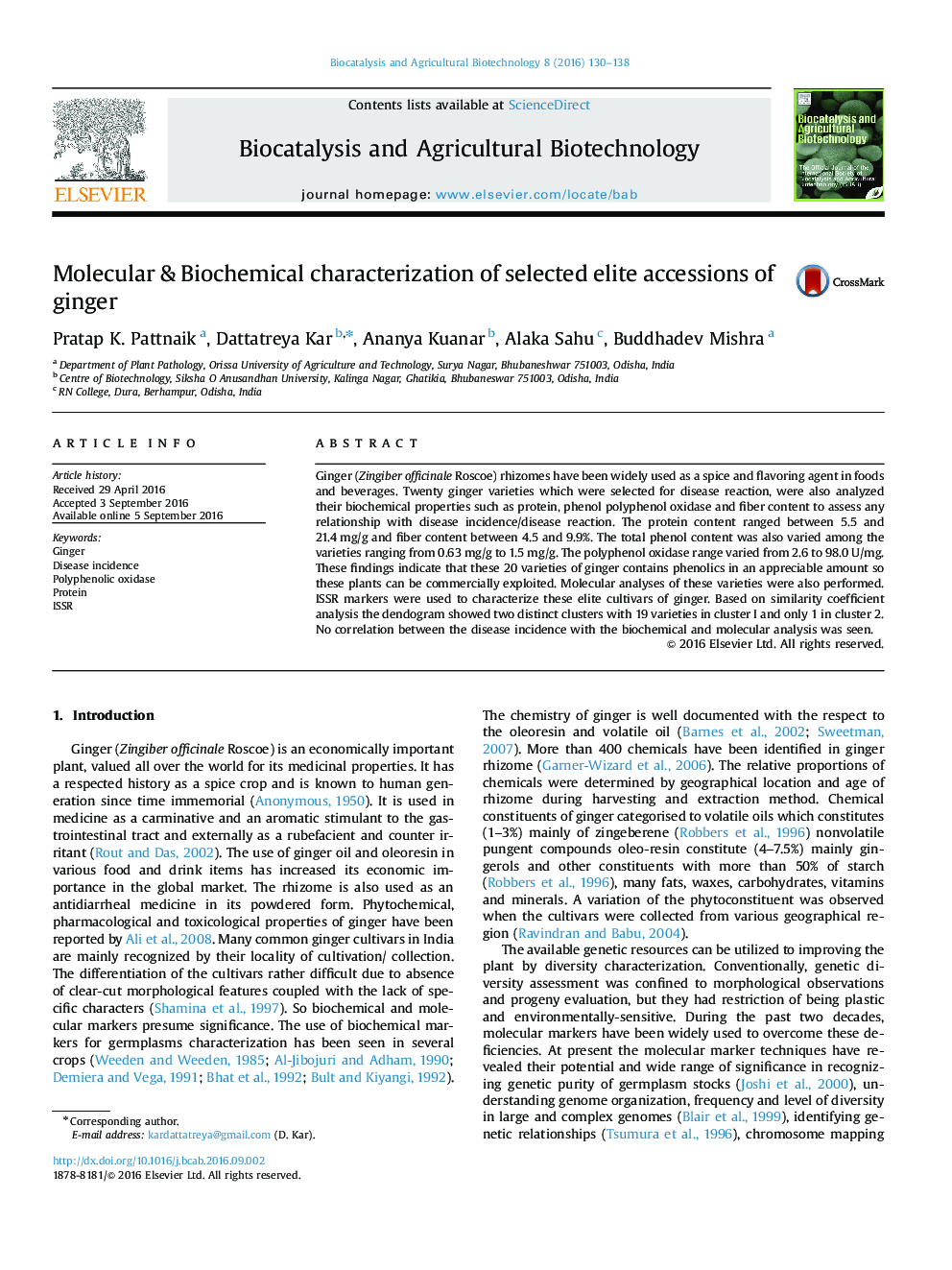| Article ID | Journal | Published Year | Pages | File Type |
|---|---|---|---|---|
| 8406200 | Biocatalysis and Agricultural Biotechnology | 2016 | 9 Pages |
Abstract
Ginger (Zingiber officinale Roscoe) rhizomes have been widely used as a spice and flavoring agent in foods and beverages. Twenty ginger varieties which were selected for disease reaction, were also analyzed their biochemical properties such as protein, phenol polyphenol oxidase and fiber content to assess any relationship with disease incidence/disease reaction. The protein content ranged between 5.5 and 21.4Â mg/g and fiber content between 4.5 and 9.9%. The total phenol content was also varied among the varieties ranging from 0.63Â mg/g to 1.5Â mg/g. The polyphenol oxidase range varied from 2.6 to 98.0Â U/mg. These findings indicate that these 20 varieties of ginger contains phenolics in an appreciable amount so these plants can be commercially exploited. Molecular analyses of these varieties were also performed. ISSR markers were used to characterize these elite cultivars of ginger. Based on similarity coefficient analysis the dendogram showed two distinct clusters with 19 varieties in cluster I and only 1 in cluster 2. No correlation between the disease incidence with the biochemical and molecular analysis was seen.
Keywords
Related Topics
Life Sciences
Agricultural and Biological Sciences
Agricultural and Biological Sciences (General)
Authors
Pratap K. Pattnaik, Dattatreya Kar, Ananya Kuanar, Alaka Sahu, Buddhadev Mishra,
